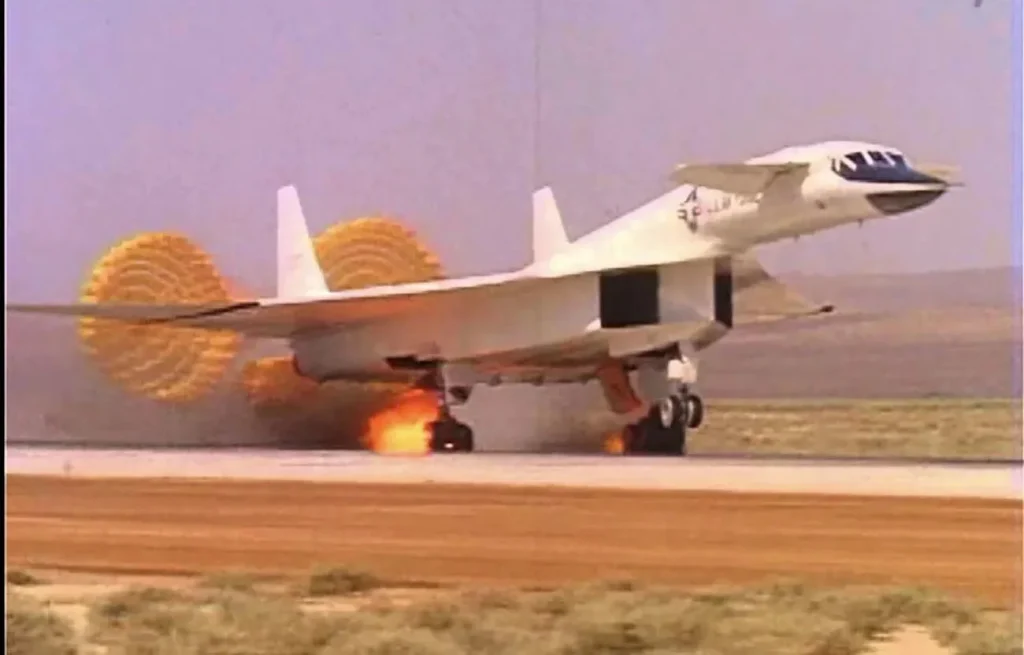The 1960s saw the Air Force flirt with supersonic dreams, crafting the XB-70 Valkyrie – a behemoth designed to breach Mach 3 and rain nuclear fury from high altitude. While the program’s ambitions were eventually grounded, two XB-70A testbeds soared, pushing the boundaries of aviation.
This is the tale of one such Valkyrie, AV-2, and its brush with disaster, averted by a pilot’s grit and a humble paperclip.
Born in the 1950s, the Valkyrie craved speed and altitude, meant to deliver a chilling payload. But the winds of war shifted, and advancements in ICBMs and SAMs rendered the program obsolete.
Still, two magnificent birds were built, AV-1 and AV-2, taking to the skies in 1964 and 1965 respectively. Sadly, AV-2’s journey ended tragically in a mid-air collision a year later.
AV-1, however, continued its research mission, eventually finding a new home at the National Museum of the USAF.
However, AV-2 had another story to tell. On April 30th, 1966, Colonel Joe Cotton and test pilot Al White embarked on a mission to push AV-2 to Mach 3 for 30 minutes. But fate had other plans.

A short-circuit in the landing gear retraction system. The 500,000-pound behemoth found itself with a jammed nose gear, slashed tires, and a complete failure of both hydraulic and electrical backup systems. Landing a Cessna without a nose gear is one thing, but attempting it in a Valkyrie would be akin to courting disaster. The steep nose-up attitude and vulnerable underbelly offered little hope for the crew’s survival.
Panic wouldn’t solve the problem. Cotton and White attempted “hard touch and goes,” hoping to jar the tire back into its locked position. An hour ticked by, each passing minute amplifying the urgency. With options dwindling, bailing out seemed like the only escape, but it meant losing not just the aircraft, but potentially their lives.
Thankfully, the ground crew wasn’t idle. After diagnosing the issue, they relayed a solution – short-circuit the electrical system. In a moment that would solidify its place in aviation lore, Cotton reached into his briefcase and pulled out a simple paperclip. This unassuming hero became the bridge between life and death as he used it to short the circuit, successfully locking the nose gear.

The landing wasn’t perfect. Three of the main landing gear locked and ignited, painting the scene with dramatic flames as the drag chutes deployed. But AV-2 touched down, battered but not broken, and Cotton and White emerged unscathed. A $750 million aircraft saved by a paperclip; a testament to the ingenuity and unwavering will of those who dared to reach for the sky.
This incident went beyond mere luck. It underscored the critical collaboration between pilots, engineers, and ground crew in ensuring aviation safety. It became a legend, reminding us that sometimes, the most extraordinary solutions can be found in the most ordinary of objects, held by the steady hand of courage.
BONUS: Avant-garde Bombers: USA VS SSSR






